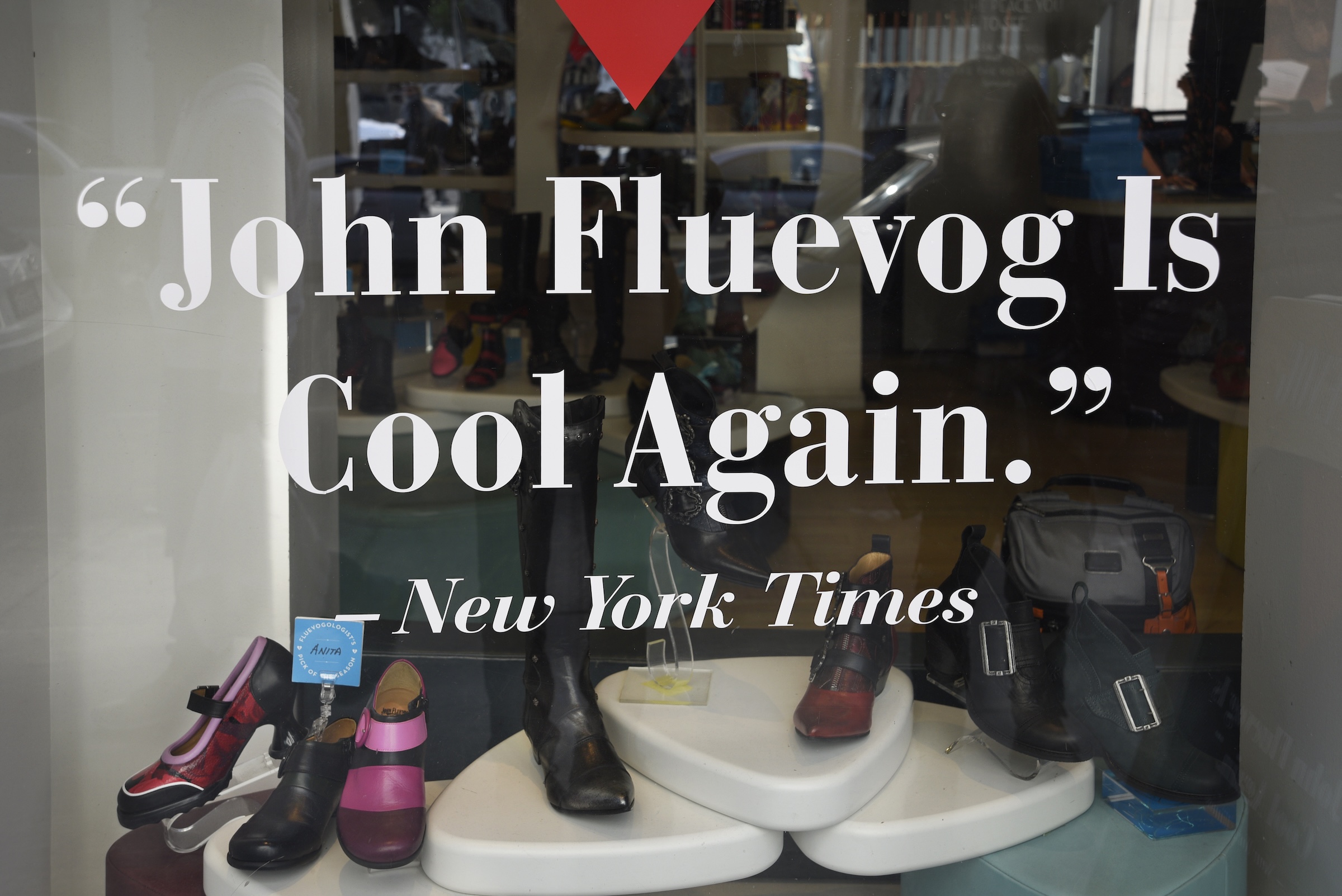There are plenty of artists out there who have made a very good living after releasing just one hit single. But as Norman Greenbaum or Dexys Midnight Runners can tell you, it’s pretty hard to string together two, three or especially four.
Many of the artists below have track records that pose an opposite and extremely enviable dilemma: How to pick the best four-single run from their long and storied careers? We took 20 of classic rock’s biggest and most influential artists, in no particular order, and selected their best four-single run. To keep things on an even playing ground we stuck with United States commercial releases only, not promotional singles.
Here are Rock’s 20 Best Four-Single Runs:
The Rolling Stones”Jumpin’ Jack Flash” (June 1, 1968)”Street Fighting Man” (Aug. 30, 1968)”Honky Tonk Woman” (July 5, 1969)”Brown Sugar” (April 17, 1971)
You could probably close your eyes and throw a dart at the Rolling Stones’ discography and start a great four-single run wherever it landed. But in the spring of 1968 Rolling Stones went on a particularly staggering run. First they put an emphatic end to their psychedelic Their Satanic Majesties Request era with the hard hitting stand-alone single “Jumpin’ Jack Flash.” The song hit the top 5 all over the world, including No. 3 on the American charts. They rounded out the year with “Street Fighting Man” from 1968’s Beggars Banquet and another stand-alone single, “Honky Tonk Woman.” Although 1969’s Let It Bleed was filled with classics such as “Gimme Shelter” and “You Can’t Always Get What You Want,” the band didn’t release another stateside single until 1971, when “Brown Sugar” was released just ahead of Sticky Fingers.
The Beatles”Ticket to Ride” (April 1965)”Help!” (July 1965)”Yesterday” (September 1965)”We Can Work It Out” (December 1965)
Much like the Rolling Stones, the Beatles released many great four-single runs. But the nod here goes to the Fab Four’s particularly amazing and diverse 1965 output, which began with April’s “Ticket to Ride,” concluded with December’s “We Can Work It Out” and also included Paul McCartney’s ballad “Yesterday,” which went on to become the world’s most covered song. Amazingly, the Beatles also released a fifth single in 1965 – February’s “Eight Days a Week.”
Led Zeppelin”Good Times, Bad Times” (March 1969)”Whole Lotta Love” (November 1969)”Immigrant Song” (November 1970)”Black Dog” (December 1971)
Preferring that their fans focus on their albums as complete statements, Led Zeppelin only released 10 singles in the United States during their entire career. Which makes picking the best four-single run pretty easy! Starting with March 1969’s “Good Times, Bad Times” and concluding with 1971’s “Black Dog” gives us one great song from each of their first four studio albums.
Van Halen”Jump” (December 1983)”I’ll Wait” (April 1984)”Panama” (June 1984)”Hot for Teacher” (October 1984)
If you ask fans to name their favorite Van Halen album, you’ll get a lot of votes for their 1978 debut and for 1984, the last album from their original lineup. Van Halen spawned an incredible four-single run, consisting of “You Really Got Me,” “Runnin’ With the Devil,” “Jamie’s Cryin'” and “Ain’t Talkin’ ’bout Love.” But 1984’s string of singles definitely has that beat in terms of commercial performance – “Jump” remains the band’s only chart-topping single, with “I’ll Wait” and “Panama” also cracking the Top 20. 1984’s singles also showcase more range, and were all original songs as well. Case closed!
Eagles”Take it to the Limit” (November 1975)”New Kid in Town” (December 1976)”Hotel California” (February 1977)”Life in the Fast Lane” (May 1977)
The best four-single Eagles run comes from two different albums and two different lineups. “Take it to the Limit” was the third and final single from 1975’s One of These Nights. Guitarist Bernie Leadon left after the album’s tour, unhappy with the band’s shift away from country to more straight-ahead rock. He was replaced by James Gang and solo star Joe Walsh for 1976’s Hotel California, which quickly racked up two straight No. 1 singles with “New Kid in Town” and the title track. Walsh’s impact on the group was crystal clear on the final single from this run, the hard-rocking “Life in the Fast Lane.”
Bob Dylan”Blowin’ in the Wind” (August 1963)”Subterranean Homesick Blues” (March 1965)”Like a Rolling Stone” (July 1965)”Positively 4th Street” (September 1965)
As impressive as the above Bob Dylan singles run is – and these are four of the most celebrated songs in the history of rock music – it could have been even greater if “The Times They Are a-Changin'” and “Maggie’s Farm” were also released as singles in the United States, as they were in March and June of 1965 in the United Kingdom.
Journey”Who’s Crying Now?” (July 1981)”Don’t Stop Believin'” (October 1981)”Open Arms” (January 1982)”Still They Ride” (May 1982)
Let’s set up an Olympics medal podium for Journey four-single runs. The bronze medal goes to “Wheel in the Sky,” “Anytime” and “Lights” from Infinity, topped off by Evolution’s “Just the Same Way.” The four singles from 1983’s Frontiers – “Separate Ways (Worlds Apart),” “Faithfully,” “After the Fall” and Send Her My Love” take the silver. But the top step on the podium goes to Escape’s monumental 1981-82 run: “Who’s Crying Now,” “Don’t Stop Believin’,” “Open Arms” and “Still They Ride.”
The Who”I Can’t Explain” (December 1964)”Anyway Anyhow Anywhere” (June 1965)”My Generation” (November 1965)”Substitute” (March 1966)
There’s three-quarters of an amazing Who ’67 and ’68 singles run that almost won here – featuring “I Can See for Miles,” “Magic Bus” and “Pinball Wizard.” But the much less essential “Call Me Lightning” pops up between the first two, sending us back to the very beginning of the band’s history for an amazing career-starting four-song run.
Metallica”Jump in the Fire” (January 1984)”Whiplash” (January 1984)”Creeping Death” (November 1984)”Master of Puppets” (July 1986)
If we wanted to include “One” and “Enter Sandman” in our four-song Metallica run we’d also have to include “Eye of the Beholder” and “The Unforgiven.” So the nod goes to the band’s first four singles, which includes tracks from Kill ‘Em All, Ride the Lightning and Master of Puppets.
Pink Floyd”Money” (April 1973)”Us and Them” (February 1974)”Have a Cigar” (November 1975)”Another Brick in the Wall Part II” (January 1980
Much like Led Zeppelin, Pink Floyd preferred to focus on albums, not singles, so much so that they didn’t even release one from their 1977 album Animals. So we’re able to focus on singles from three other classic albums: “Money” and “Us and Them” from The Dark Side of the Moon, “Have a Cigar” from Wish You Were Here and “Another Brick in the Wall Part II” from The Wall.
Heart”Crazy on You” (March 1976)”Magic Man” (June 1976)”Dreamboat Annie” (November 1976)”Barracuda” (May 1977)
Right off the bat, Heart launched their career with an amazing four-single run featuring three of their best-known songs and an underrated gem. Their 1975 debut Dreamboat Annie provides us with the title track, “Crazy on You” and “Magic Man.” A messy legal battle between the band and their label meant that their next single, the scathing “Barracuda,” actually came from their third album, 1977’s Little Queen.
Queen”Bohemian Rhapsody” (December 1975)”You’re My Best Friend” (May 1976)”Somebody to Love” (November 1976)”Tie Your Mother Down” (March 1977)
Queen’s astonishing ranges is on full display in this impeccable four-single run, led by the groundbreaking “Bohemian Rhapsody” and the sunny “You’re My Best Friend” from 1975’s A Night at the Opera and continuing with the gorgeous “Somebody to Love” and the hard-rocking “Tie Your Mother Down” from A Day at the Races.
Guns N’ Roses”Sweet Child O’ Mine” (June 1988)”Welcome to the Jungle” (October 1988)”Paradise City” (January 1989)”Patience” (March 1989)
No need for rocket surgery here. The three songs released as singles from Guns N’ Roses’ 1987 debut Appetite for Destruction are all probably playing on about 100 radio stations across the country at this exact moment, and the acoustic ballad “Patience” from 1988’s G N’ R Lies rounds out their foursome quite nicely. Just for fun, here’s the next four singles the band released: “Nightrain,” “You Could Be Mine,” “Don’t Cry” and “Live and Let Die.”
AC/DC”Problem Child” (September 1977)”Rock ‘N’ Roll Damnation” (September 1978)”Whole Lotta Rosie” (January 1979)”Highway to Hell” (July 1979)
No “Back in Black” or “You Shook Me All Night Long?” you say? Sorry but to include those admittedly awesome AC/DC songs we’d also have to include “Get it Up” and / or “Touch Too Much,” which are fully cool but don’t quite reach the consistent quality of the four Bon Scott-era classics above.
Aerosmith”Sweet Emotion” (May 1975)”Walk This Way” (August 1975)”You See Me Crying” (November 1975)”Last Child” (May 1976)
The twin peaks of Aerosmith’s catalog, 1975’s Toys in the Attic and 1976’s Rocks, is where you’ll find an all-time four-single run. “Sweet Emotion,” “Walk This Way” and the sublime ballad “You See Me Crying” all come from the former, while “Last Child” is the first of three great 45s released from Rocks, followed by “Home Tonight” and “Back in the Saddle.” (If you want to pick their best ’80s run, how about “Shela,” “Dude (Looks Like a Lady),” “Angel” and “Rag Doll?”)
Def Leppard”Bringin’ on the Heartbreak” (November 1981)”Photograph” (March 1983)”Rock of Ages” (May 1983)”Foolin'” (August 1983)
If “Woman” wasn’t the first single Def Leppard released from Hysteria, we’d have a much tougher choice on our hands here. A strong case could also be made for the second through fifth singles from that album – “Animal,” “Hysteria,” “Pour Some Sugar on Me” and “Love Bites.” But first prize still goes to the last single from 1981’s High ‘n’ Dry and the first three from the band’s breakthrough 1983 classic Pyromania.
Kiss”Hard Luck Woman” (November 1976)”Dr. Love” (February 1977)”Christine Sixteen” (July 1977)”Love Gun” (September 1977)
With two songs each from 1976’s Rock and Roll Over and 1977’s Love Gun, this Kiss four-single run finds the band ending their original lineup’s golden era in strong form. Paul Stanley originally intended to offer “Hard Luck Woman” to Rod Stewart, but wisely kept it for his own band. Gene Simmons locks down his reputation as rock’s creepiest uncle with “Dr. Love” and “Christine Sixteen,” and finally Stanley sets a new standard for phallic metaphors with “Love Gun.”
Joni Mitchell”You Turn Me On, I’m a Radio” (October 1972)”Raised on Robbery” (November 1973)”Help Me” (February 1974)”Free Man in Paris” (July 1974)
As much as it huts to leave out “Chelsea Morning” and “Big Yellow Taxi,” this four-single run captures Joni Mitchell’s shift from folk into jazz-influenced music, and also her undeniable commercial peak. “Help Me” was her first and only No. 1 hit in America, with “Free Man in Paris” landing just one spot short of that peak.
Motley Crue”Looks that Kill” (January 1984)”Too Young to Fall in Love” (May 1984)”Smokin’ in the Boys Room” (June 1985)”Home Sweet Home” (September 1985)
This isn’t just a four-single run, with two great songs each from Shout at the Devil and Theatre of Pain it’s basically half of a Motley Crue greatest hits album. (Not that we need any more of those!) If you prefer a slightly later era you could swap out the two Shout songs for “Girls, Girls, Girls” and the outstanding “Wild Side.”
Creedence Clearwater Revival”Proud Mary” (December 1968)”Bad Moon Rising” (April 1969)”Green River” (July 1969)”Fortunate Son” / “Down on the Corner” (October 1969)
Creedence Clearwater Revival had one of the most prolific years in rock history in 1969, releasing three classic albums – Bayou Country, Green River and Willy and the Poor Boys – in the span of just over 10 months. Each of those records places at least one single on our chosen run – including the double-A side “Fortunate Son” / “Down on the Corner.”
Rock’s Best Four-Album Runs
These are the stuff of legend.
Gallery Credit: Bryan Rolli







